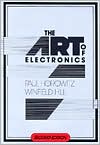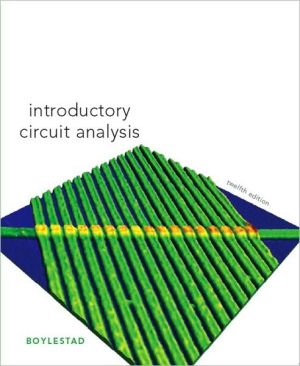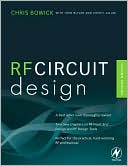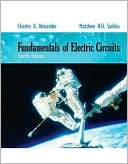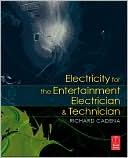Practical RF System Design
The ultimate practical resource for today's RF system design professionals\ Radio frequency components and circuits form the backbone of today's mobile and satellite communications networks. Consequently, both practicing and aspiring industry professionals need to be able to solve ever more complex problems of RF design.\ Blending theoretical rigor with a wealth of practical expertise, Practical RF System Design addresses a variety of complex, real-world problems that system engineers are...
Search in google:
The ultimate practical resource for today’s RF system design professionalsRadio frequency components and circuits form the backbone of today’s mobile and satellite communications networks. Consequently, both practicing and aspiring industry professionals need to be able to solve ever more complex problems of RF design.Blending theoretical rigor with a wealth of practical expertise, Practical RF System Design addresses a variety of complex, real-world problems that system engineers are likely to encounter in today’s burgeoning communications industry with solutions that are not easily available in the existing literature. The author, an expert in the field of RF module and system design, provides powerful techniques for analyzing real RF systems, with emphasis on some that are currently not well understood. Combining theoretical results and models with examples, he challenges readers to address such practical issues as:How standing wave ratio affects system gainHow noise on a local oscillator will affect receiver noise figure and desensitization How to determine the dynamic range of a cascade from module specificationsHow phase noise affects system performance and where it comes fromHow intermodulation products (IMs) predictably change with signal amplitude, and why they sometimes change differentlyAn essential resource for today’s RF system engineers, the text covers important topics in the areas of system noise and nonlinearity, frequency conversion, and phase noise. Along with a wealth of practical examples using MATLAB® and Excel, spreadsheets are available for download from an FTP Web site to help readers apply the methods outlined in this important resource.
Practical RF System Design\ \ By William F. Egan \ John Wiley & Sons\ ISBN: 0-471-20023-9 \ \ \ Chapter One\ INTRODUCTION \ This book is about systems that operate at radio frequencies (RF) (including microwaves) where high-frequency techniques, such as impedance matching, are important. It covers the interactions of the RF modules between the antenna output and the signal processors. Its goal is to provide an understanding of how their characteristics combine to determine system performance. This chapter is a general discussion of topics in the book and of the system design process.\ 1.1 SYSTEM DESIGN PROCESS\ We do system design by conceptualizing a set of functional blocks, and their specifications, that will interact in a manner that produces the required system performance. To do this successfully, we require imagination and an understanding of the costs of achieving the various specifications. Of course, we also must understand how the characteristics of the individual blocks affect the performance of the system. This is essentially analysis, analysis at the block level. By this process, we can combine existing blocks with new blocks, using the specifications of the former and creating specifications for the latter in a manner that will achieve the system requirements.\ The specifications for a block generally consist of the parameter values we would like it to have plus allowed variations, that is, tolerances. We would like the tolerances to be zero, but that is notfeasible so we accept values that are compromises between costs and resulting degradations in system performance. Not until modules have been developed and measured do we know their parameters to a high degree of accuracy (at least for one copy). At that point we might insert the module parameters into a sophisticated simulation program to compute the expected cascade performance (or perhaps just hook them together to see how the cascade works). But it is important in the design process to ascertain the range of performance to be expected from the cascade, given its module specifications. We need this ability so we can write the specifications.\ Spreadsheets are used extensively in this book because they can be helpful in improving our understanding, which is our main objective, while also providing tools to aid in the application of that understanding.\ 1.2 ORGANIZATION OF THE BOOK\ It is common practice to list the modules of an RF system on a spreadsheet, along with their gains, noise figures, and intercept points, and to design into that spreadsheet the capability of computing parameters of the cascade from these module parameters. The spreadsheet then serves as a plan for the system. The next three chapters are devoted to that process, one chapter for each of these parameter.\ At first it may seem that overall gain can be easily computed from individual gains, but the usual imperfect impedance matches complicate the process. In Chapter 2, we discover how to account for these imperfections, either exactly or, in most cases, by finding the range of system gains that will result from the range of module parameters permitted by their specifications.\ The method for computing system noise figure from module noise figures is well known to many RF engineers but some subtleties are not. Ideally, we use noise figure values that were obtained under the same interface conditions as seen in the system. Practically, that information is not generally available, especially at the design concept phase. In Chapter 3, we consider how to use the information that is available to determine system noise figure and what variations are to be expected. We also consider how the effective noise figures of mixers are increased by image noise. Later we will study how the local oscillator (LO) can contribute to the mixer's noise figure.\ The concept of intercept points, how to use intercept points to compute intermodulation products, and how to obtain cascade intercept points from those of the modules will be studied in Chapter 4. Anomalous intermods that do not follow the usual rules are also described.\ The combined effects of noise and intermodulation products are considered in Chapter 5. One result is the concept of spur-free dynamic range. Another is the portrayal of noise distributions resulting from the intermodulation of bands of noise. The similarity between noise bands and bands of signals both aids the analysis and provides practical applications for it.\ Having established the means for computing parameters for cascades of modules connected in series, in Chapter 6 we take a brief journey through various means of connecting modules or components in parallel. We discover the advantages that these various methods provide in suppressing spurious outputs and how their overall parameters are related to the parameters of the individual components.\ Then, in Chapter 7, we consider the method for design of frequency converters that uses graphs to give an immediate picture of the spurs and their relationships to the desired signal bands, allowing us to visualize problems and solutions. We also learn how to predict spurious levels and those, along with the relationships between the spurs and the passbands, permit us to ascertain filter requirements.\ The processes described in the initial chapters are linear, or almost so, except for the frequency translation inherent in frequency conversion. Some processes, however, are severely nonlinear and, while performance is typically characterized for the one signal that is supposed to be present, we need a method to determine what happens when small, contaminating, signals accompany that desired signal. This is considered in Chapter 8. The most important nonlinearity in many applications is that associated with the mixer's LO; so we emphasize the system effects of contaminants on the LO.\ Lastly, in Chapter 9, we will study phase noise: where it comes from, how it passes through a system, and what are its important effects in the RF system.\ 1.3 APPENDIXES\ Material that is not essential to the flow of the main text, but that is nevertheless important, has been organized in 17 appendixes. These are designated by letters, and an attempt has been made to choose a letter that could be associated with the content (e.g., G for gain, M for matrix) as an aid to recalling the location of the material. Some appendixes are tutorial, providing a reference for those who are unfamiliar with certain background material, or who may need their memory refreshed, without holding up other readers. Some appendixes expand upon the material in the chapters, sometimes providing more detailed explanations or backup. Others extend the material.\ 1.4 SPREADSHEETS\ The spreadsheets were created in Microsoft(r) Excel and can be downloaded as Microsoft Excel 97/98 workbook files (see page xix). This makes them available for the readers' own use and also presents an opportunity for better understanding. One can study the equations being used and view the charts, which appear in black and white in the text, in color on the computer screen. One can also make use of Excel's Trace Precedents feature (see, e.g., Fig. 3.5) to illustrate the composition of various equations.\ 1.5 TEST AND SIMULATION\ Ultimately, we know how a system performs by observing it in operation. We could also observe the results of an accurate simulation, that being one that produces the same results as the system. Under some conditions, it may be easier, quicker, or more economical to simulate a system than to build and test it. Even though the proof of the simulation model is its correspondence to the system, it can be valuable as an initial estimate of the system to be improved as test data becomes available. Once confidence is established, there may be advantages in using the model to estimate system performance under various conditions or to predict the effect of modifications. But modeling and simulating is basically the same as building and testing. They are the means by which system performance is verified. First there must be a system and, before that, a system design.\ In the early stages of system design we use a general knowledge of the performance available from various system components. As the design progresses, we get more specific and begin to use the characteristics of particular realizations of the component blocks. We may initially have to estimate certain performance characteristics, possibly based on an understanding of theoretical or typical connections between certain specifications. As the design progresses we will want assurance of important parameter values, and we might ultimately test a number of components of a given type to ascertain the repeatability of characteristics. Finally we will specify the performance required from the system's component blocks to ensure the system meets its performance requirements.\ Based on information concerning the likelihood of deviations from desired performance provided by our system design analysis, we may be led to accept a small but nonzero probability of performance outside of the desired bounds. Once the system has been built and tested, it may be possible to use an accurate simulation to show that the results achieved, even with expected component variations, are better than the worst case implied by the combination of the individual block specifications. To base expected performance on simulated or measured results, rather than on functional block specifications, however, requires that we have continuing control over the construction details of the components of various copies of the system, rather than merely ensuring that the blocks meet their specifications. For example, a particular amplifier design may produce a stable phase shift that has a fortuitous effect on system performance, but we would have to control changes in its design and in that of interacting components.\ Another important aspect of test is general experimentation, not confined to a particular design, for the purpose of verifying the degree of applicability of theory to various practical components. Examples of reports giving such supporting experimental data can be seen in Egan (2000), relative to the theory in Chapter 8, and in Henderson (1993a), relative to Chapter 7. We can hope that these, and the other, chapters will suggest opportunities for additional worthwhile papers.\ 1.6 PRACTICAL SKEPTICISM\ There is a tendency for engineering students to assume that anything written in a book is accurate. This comes naturally from our struggle just to approach the knowledge of the authors whose books we study (and to be able to show this on exams). With enough experience in using published information, however, we are likely to develop some skepticism, especially if we should spend many hours pursuing a development based on an erroneous parameter value or perhaps on a concept that applies almost universally - but not in our case. Even reviewed journals, which we might expect to be most nearly free of errors, and classic works contain sources of such problems. But the technical literature also contains valuable, even essential, information; so a healthy skepticism is one that leads us to consult it freely and extensively but to continually check what we learn. We check for accuracy in our reference sources, for accuracy in our use of the information, and to ensure that it truly applies to our development. We check by considering how concepts correlate with each other (e.g., does this make sense in terms of what I already know), by verifying agreement between answers obtained by different methods, and by testing as we proceed in our developments. The greater the cost of failure, the more important is verification. Unexpected results can be opportunities to increase our knowledge, but we do not want to pay too high a price for the educational experience.\ 1.7 REFERENCES\ References are included for several reasons: to recognize the sources, to offer alternate presentations of the material, or to provide sources for associated topics that are beyond the scope of this work. The author-date style of referencing is used throughout the book. From these, one can easily find the complete reference descriptions in the References at the end of the text. Some notes are placed at the end of the chapter in which they are referenced.\ (Continues...)\ \ \ \ \ Excerpted from Practical RF System Design by William F. Egan Excerpted by permission.\ All rights reserved. No part of this excerpt may be reproduced or reprinted without permission in writing from the publisher.\ Excerpts are provided by Dial-A-Book Inc. solely for the personal use of visitors to this web site. \ \
PrefaceGetting Files from the Wiley ftp and Internet SitesSymbols List and Glossary1Introduction12Gain73Noise Figure474Nonlinearity in the Signal Path915Noise and Nonlinearity1236Architectures that Improve Linearity1497Frequency Conversion1658Contaminating Signals in Severe Nonlinearities2199Phase Noise245App. AOP AMP Noise Factor Calculations273App. BRepresentations of Frequency Bands, If Normalization279App. CConversion Arithmetic289App. EExample of Frequency Conversion293App. FSome Relevant Formulas303App. GTypes of Power Gain313App. HFormulas Relating to IMs and Harmonics317App. IChanging the Standard Impedance321App. LPower Delivered to the Load325App. MMatrix Multiplication327App. NNoise Factors - Standard and Theoretical329App. PIM Products in Mixers345App. SComposite S Parameters349App. TThird-Order Terms at Input Frequency353App. VSensitivities and Variance of Noise Figure355App. XCrossover Spurs359App. ZNonstandard Modules363References371Index379


